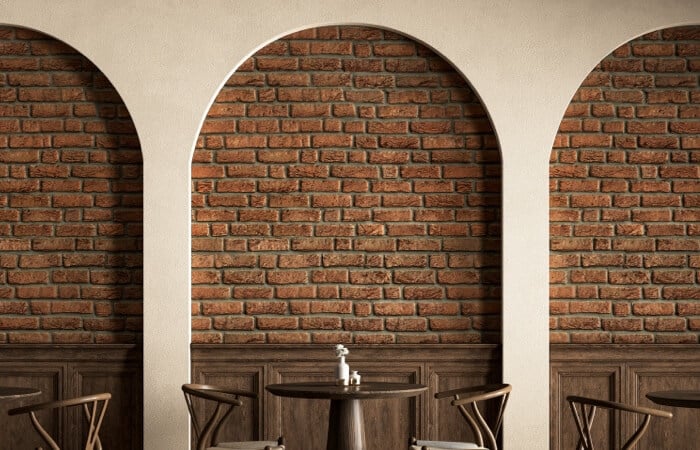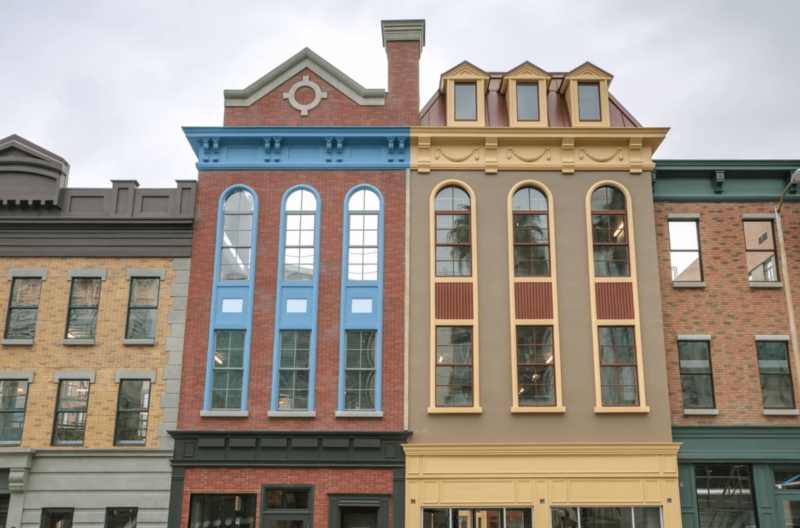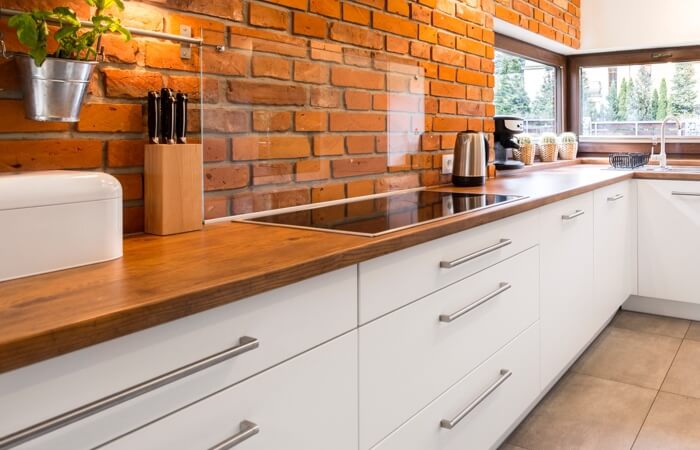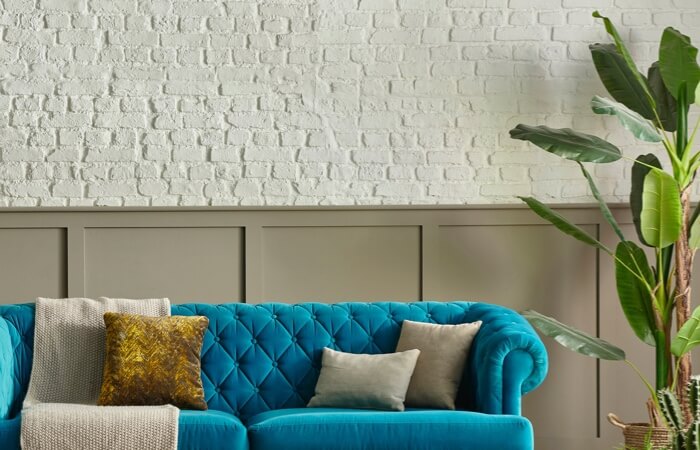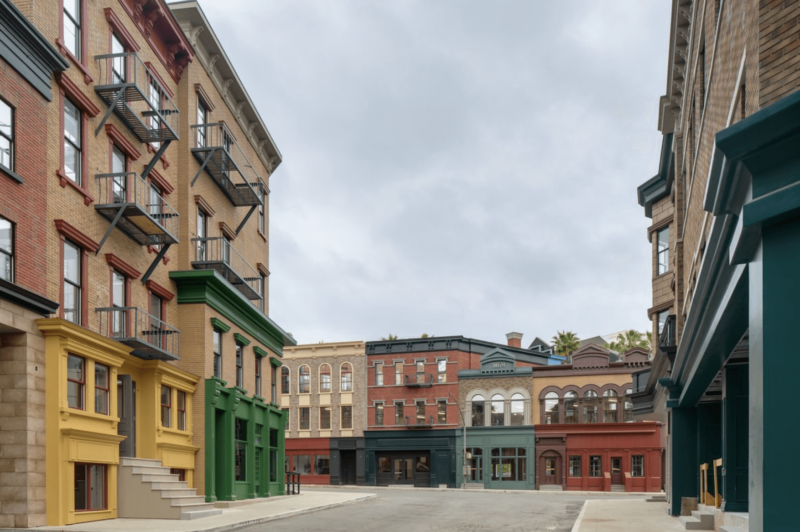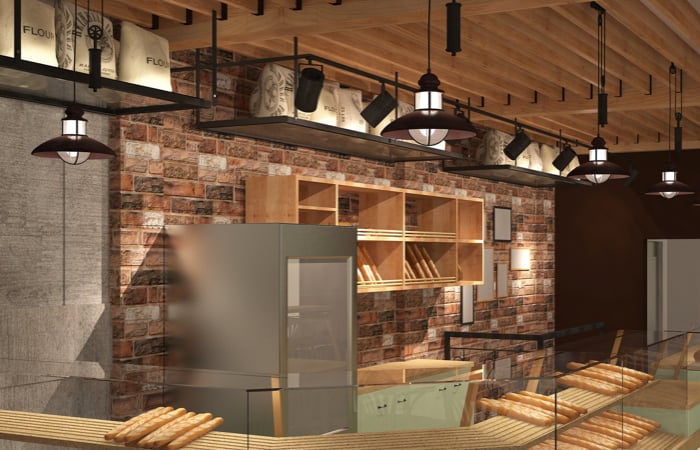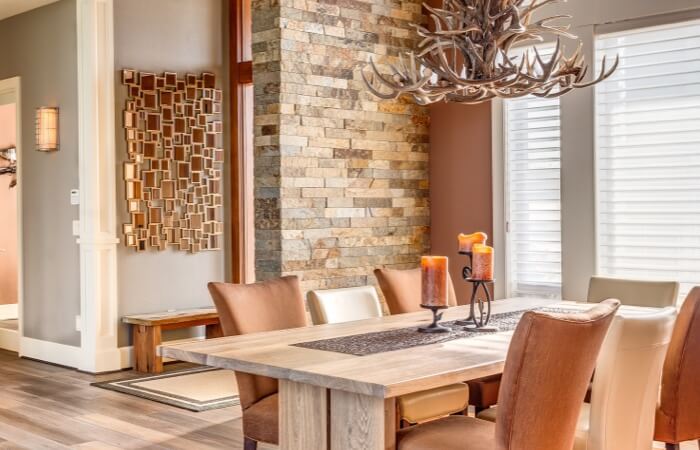
If you’re looking to transform your home or a building, vinyl brick siding is a cost-effective way to mimic the appearance of traditional brickwork. In addition to enhancing and protecting a building’s surface, vinyl brick siding adds visual appeal without compromising its structural integrity.
Whether you’re a homeowner or a construction professional embarking on a new project, this popular construction method is low maintenance, and versatile. Read on for a comprehensive overview of vinyl brick siding, including costs, installation instructions and alternatives.
What Is Vinyl Brick Siding?
Vinyl brick siding offers homeowners an alternative way to achieve a classic brick look without the high price tag or extensive labor associated with it. It’s an exterior cladding method that involves applying a vinyl brick veneer to the surface of a home or building.
Vinyl siding is made from durable plastic, which is molded, textured and colored to resemble traditional bricks. Its versatile nature enables homeowners to customize the style and color to their preferences and create a desired look for their home.
This budget-friendly approach to simulating the aesthetic appeal of brick is faster and easier to install. Its lightweight yet durable composition is low-maintenance and built to last, so you can enjoy all benefits of the look without compromising longevity.
Alternatives to Vinyl Brick Siding
While many homeowners turn to vinyl siding for its low cost, durability and low-maintenance nature, there are alternative materials you can use to achieve a similar look.
Faux brick panels: Made from high-density polyurethane, faux brick panels achieve a similar look to vinyl. They are another easy, low-cost option homeowners can use to transform interior and exterior surfaces.
Faux stone: Stone veneer is a mix of cement, color and texture agents. While it does achieve a similar look to brick, it is considerably more expensive than other alternatives.
Synthetic stucco: Composed of acrylic resin and sand, this versatile material can be adapted to look like brick. Synthetic stucco offers great insulation but can be challenging to install and expensive to repair if damaged with water or moisture.
Fiber cement: This composite material is a mixture of cement, cellulose fibers and additional additives. It can be customized to mimic the appearance of brick and is a low-maintenance option; however, it may need to be repaired or repainted as it endures the elements over time.
How to Install Vinyl Brick Siding
If you’re construction savvy or a DIY enthusiast, you can install vinyl brick siding on your own. Follow these steps along with specific guidelines from the siding’s manufacturer.
1. Measure the space
Start by measuring where you plan to install the vinyl brick siding. Make sure to account for doors, windows or wall openings to get an accurate idea of how many panels you need to fill the surface.
2. Prepare the Surface
If you are replacing old siding, you will need to remove it completely before you begin. Make sure the area you plan to cover is clean, dry and free of debris.
To prevent future water damage to your home’s frame, you will need to install a moisture barrier. The ideal moisture barrier for your home will depend on the climate and environment in your area, so be sure to research the best option for you.
3. Place and Secure the Panels
When the surface is ready, attach a starter strip to the bottom of the wall. This will be the base for your first row of siding, so use a level or level chalk line to ensure the strip is secured evenly.
Lock your first panel into the starter strip using the mechanisms provided. If using nails or screws, hammer one at each end of the wall and every ten or so inches in between. Be careful not to secure the nails too tightly. The vinyl will need room to expand and contract with the heat and cold throughout the year. Continue covering the wall by interlocking the panels, making sure they overlap to provide proper water resistance.
Before placing panels around corners, doors and windows, you need to install J-channels. A J-channel is a type of trim that secures the edges of siding panels and helps create a finished look. Then, trim siding panels with a utility knife or specialized cutting tool to get them down to the required size before attaching them to the J-channel if necessary. If you’re left with extra trimmings, you can use them to cover edges or create accents.
4. Add Finishing Touches
Finish off the job by ensuring all vinyl siding is secured. You can also add corner posts, decorative elements or additional accessories if desired.
Keep in mind that improperly placed panels can cause long-term damage. If you have doubts before or during the process, it may be worth hiring a professional. Many siding contractors are licensed and can ensure siding is accurately installed to prevent moisture damage, warping or unsecure placement.
Vinyl Brick Siding Applications
The remarkable versatility of vinyl brick siding lends itself to both interior and exterior applications.
Exterior Applications
Vinyl brick siding is a convenient way to transform the appearance of existing structures, as it can be placed over wood, stucco or brick veneer. Aesthetically appealing in nature, this material is an affordable way to increase curb appeal and future resale value.
Vinyl brick siding also offers other practical advantages like weatherproofing and safeguarding the overall integrity of homes and buildings.
Interior Applications
If you’re looking to bring the brick look indoors without breaking the bank, vinyl siding can be a great addition to a residential or commercial interior. Installing an accent wall in a home, lobby or other indoor space can add charm and help create a more inviting atmosphere.
Cost of Vinyl Brick Siding
Vinyl brick siding’s affordable price tag makes it a more attractive option than real brick for those with a budget. The total cost will vary depending on the size of the home, materials chosen and labor (if professionals are hired for installation). However, on average, you can expect vinyl brick siding to cost between $6 and $10 per square foot.
Whether you’re looking to upgrade the exterior or interior surface of a home or building, vinyl brick siding is one low-cost approach to creating the charming feel of traditional brick. It’s an easy, low-maintenance way to increase your home’s resale value while protecting its structure over time.
If you’re interested in learning more about installing wall panels in your home and the advantages that come with it, check out our ebook: 9 Questions to Ask Before Investing in Faux Wall Panels to learn more.
